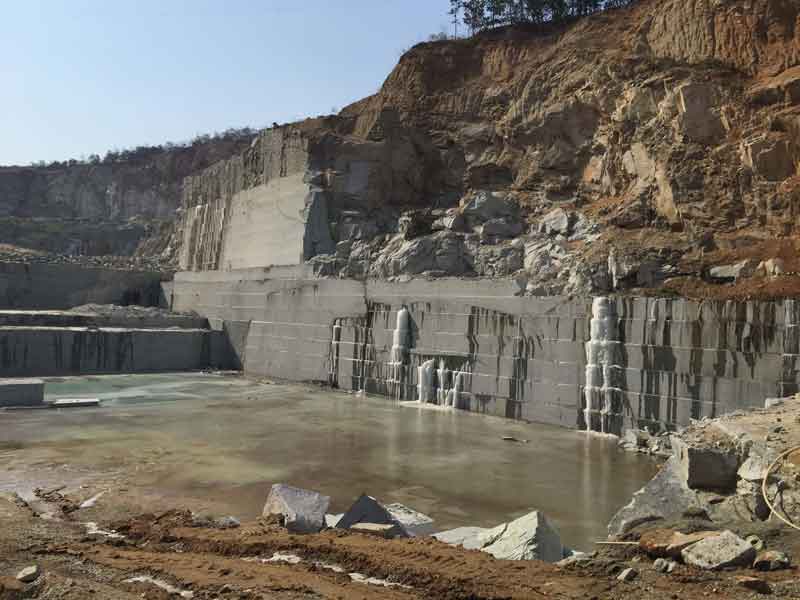Finding the Beauty of Granite Quarry in South Africa Marvels
Finding the Beauty of Granite Quarry in South Africa Marvels
Blog Article
Unveiling the Mysteries of Granite Quarrying: Where Stamina and Sophistication Meet
The globe of granite quarrying is a realm where the raw stamina of nature merges with human virtuosity to create structures that stand the examination of time with an air of style. From the depths of quarries to the precise sprucing up in workshops, the procedure of changing granite into architectural marvels is a complicated dancing of practice and innovation. As we peer into the depths of this ancient craft, we begin to discover the surprise details that shape the very essence of our built atmosphere.
The Origins of Granite Quarrying
In the annals of building background, the beginnings of granite quarrying are shrouded in a tapestry of old workmanship and geological wonders. Going back to old Egypt and Mesopotamia, the removal of granite from quarries noted the start of a trip that would ultimately cause the production of several of the globe's most famous frameworks.
Granite quarrying's origins can be mapped to the proficient craftsmens that acknowledged the stone's sturdiness and aesthetic charm. With a combination of primitive tools and large resolution, these very early quarry employees discovered granite blocks that would become the building blocks of human beings.
As human beings advanced, so did the strategies of quarrying granite. The Romans, renowned for their design prowess, developed innovative approaches for drawing out granite to build monuments, holy places, and roadways that stood the examination of time.
The legacy of these old quarrying techniques remains to form contemporary style, with granite remaining an icon of strength and style in building and construction jobs around the globe. (granite quarries in south africa)
Tools of the Quarrying Trade
The development of granite quarrying techniques from ancient civilizations to contemporary times highlights the vital duty played by the devices of the quarrying sell shaping the sector's practices. In old times, quarrying tools were basic, frequently including blades, hammers, and wedges made from materials like bronze or iron. These devices required substantial manpower and time to remove granite blocks from quarries.

In addition, the intro of pneumatically-driven devices and high-powered equipment has actually substantially lowered the physical labor called for in quarrying procedures, improving employee security and efficiency. As the quarrying industry continues to innovate, the devices of the profession stay at the leading edge of driving development and shaping the future of granite extraction.
Drawing Out Blocks of Granite
Using precision machinery and progressed strategies, the removal of granite blocks from quarries has come to be an innovative procedure in the contemporary quarrying industry. The first action includes identifying the location and dimension of the granite deposit to identify the most reliable extraction method. As soon as an appropriate site is selected, the extraction procedure begins with the exploration of openings for the placement of nitroglycerins. Managed blasting strategies are after that employed to disintegrate the granite into manageable areas.

Polishing and Completing Strategies
To attain a flawless surface area on granite blocks, experienced craftsmens use a series of careful sprucing up and completing strategies. After the initial extraction and forming procedures, the granite blocks go go to these guys through a detailed polishing stage to boost their natural charm and toughness.
In addition to polishing, ending up strategies are used to more improve the granite's look. By very carefully choosing and applying these polishing and finishing strategies, craftsmens can change raw granite blocks into exquisite items that display both stamina and sophistication.

Ecological Effect and Sustainability
With the expanding focus on ecological consciousness in the industry, granite quarrying methods are significantly looked at for their impact on natural resources and long-lasting sustainability. Furthermore, the transport of granite from quarries to refining centers creates carbon emissions, even more see this here contributing to environmental deterioration.
To alleviate these influences and make certain sustainability in granite quarrying, industry stakeholders are adopting various steps. Executing sophisticated innovations to minimize power usage and water use, recovering quarried land for environmental repair, and advertising accountable sourcing methods are some techniques being utilized. Additionally, accreditations such as the Forest Stewardship Council (FSC) and the Leadership in Power and Environmental Layout (LEED) assistance consumers recognize environmentally pleasant granite products.
Final Thought
To conclude, granite quarrying is a procedure that needs specialized devices and techniques to remove blocks of granite and brighten them to a high level of coating. While the environmental influence of quarrying can be significant, efforts are being made to boost sustainability methods in the industry. Overall, granite quarrying is a delicate balance in between taking advantage of the strength and style of this natural rock while reducing its effect on the atmosphere.
Report this page